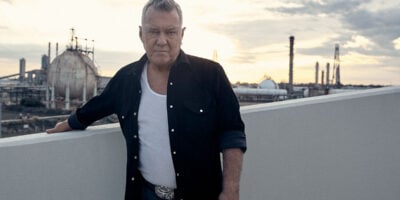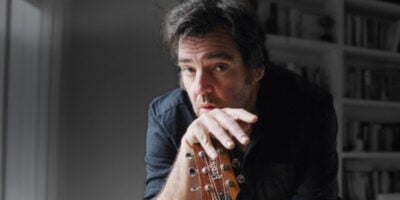Graveyard stood equidistant on the stage, their long hair shielding their faces from a packed-out crowd that donned varying shades of black. One or two sported immaculately put-together Turbojugend jackets, while most others had resigned themselves to a sort of dishevelled charm – long hair, unshaven, a raglan tee, skinny jeans, and worn-out kicks.
Following a breakneck burst of feedback from the towering Marshall stacks that were placed behind guitarists Joakim Nilsson and Jonatan Larocca-Ramm and bassist Truls Mörc, the band quickly set about their work. Within moments, they were conjuring the mighty atom that when split brings forth Valhalla, and boy do they have the hammer to get the job done.
Graveyard quickly worked their way through a sublime opening trifecta: ‘Seven Seven’, ‘Goliath’, and ‘Hard Times Lovin”, which set the tone for the rest of the evening. Chatter was kept to a minimum and so too were jams, much to the surprise of some in the crowd.
When the band did opt to indulge, they never strayed far from the confines of the song. It was refreshing to see, as bands of Graveyard’s particular ilk too often sacrifice stage time, coherence, and fans’ patience in the interest of pursuing often fruitless jams. Graveyard’s restraint is a sign of the band’s maturity and sharp musical acumen.
The band followed their opening hat trick with the well-worn setlist staple ‘Hisingen Blues’ and the audience was able to enjoy the full range of Nilsson’s sonorous yet bluesy vocal ability, which courses soulfully and believably through each note of more subdued tunes like ‘The Siren’ and ‘Uncomfortably Numb’ as well as doomy garage rockers like ‘Ain’t Fit to Live Here’.
Despite the stereotypes that would normally come with an image such as Graveyard’s the band could go toe to toe with any contender. The musicianship is on-point, particularly from drummer Axel Sjöberg, and the clarity and precision with which haunting tunes like ‘Slow Motion Countdown’ are rendered make hairs stand on arms and necks throughout the crowd.
While on record one is fully aware of the way Graveyard are able to manipulate their mighty freight train sonics to channel any number of genres, whether blues, metal, doom, or plain old bar band rock and roll, it’s only when experiencing the band live that one begins to understand the intricate family tree that’s routed through the band.
Nilsson’s vocals are as reminiscent of the late Bon Scott as they are of Howlin’ Wolf, both of whom stand in history’s gaze as progenitor’s of modern heavy metal singing.
The band, meanwhile, are a thick, primordial ooze bubbling in a black cauldron, with elements of the Holy Trinity (Deep Purple, Black Sabbath, and Led Zeppelin), the Motor City bands, as well as American blues and psychedelic music, the ’80s doom scene, to which Sweden contributed more than its fair share, and modern garage rock like precursors The Hellacopters.
Those well-versed in the canon of Australian hard rock will even hear elements of bands like The Masters Apprentices and Buffalo. Of course, little of that actually matters to the frenzied crowd squeezed into the Ding Dong band room. As far as they’re concerned, Graveyard play rock and roll the way they like to hear it.
After opening an encore with ‘Endless Night’ and ‘The Siren’, the band conclude with the rolling riffs and pummelling drums of ‘Evil Ways’ from their 2007 self-titled debut. The crowd erupts in a fit of jumping and moshing as bodies are pushed into one another almost as if to mimic the clashing dynamics of the song.
The fans that came to hear rock and roll the way they like it played file out of the Ding Dong Lounge as a sweaty mass of hair, denim, and leather, ears ringing, and even a nose or two bleeding. It’s rock and roll the way they like to hear it, and it’s the only way it should be played.

































